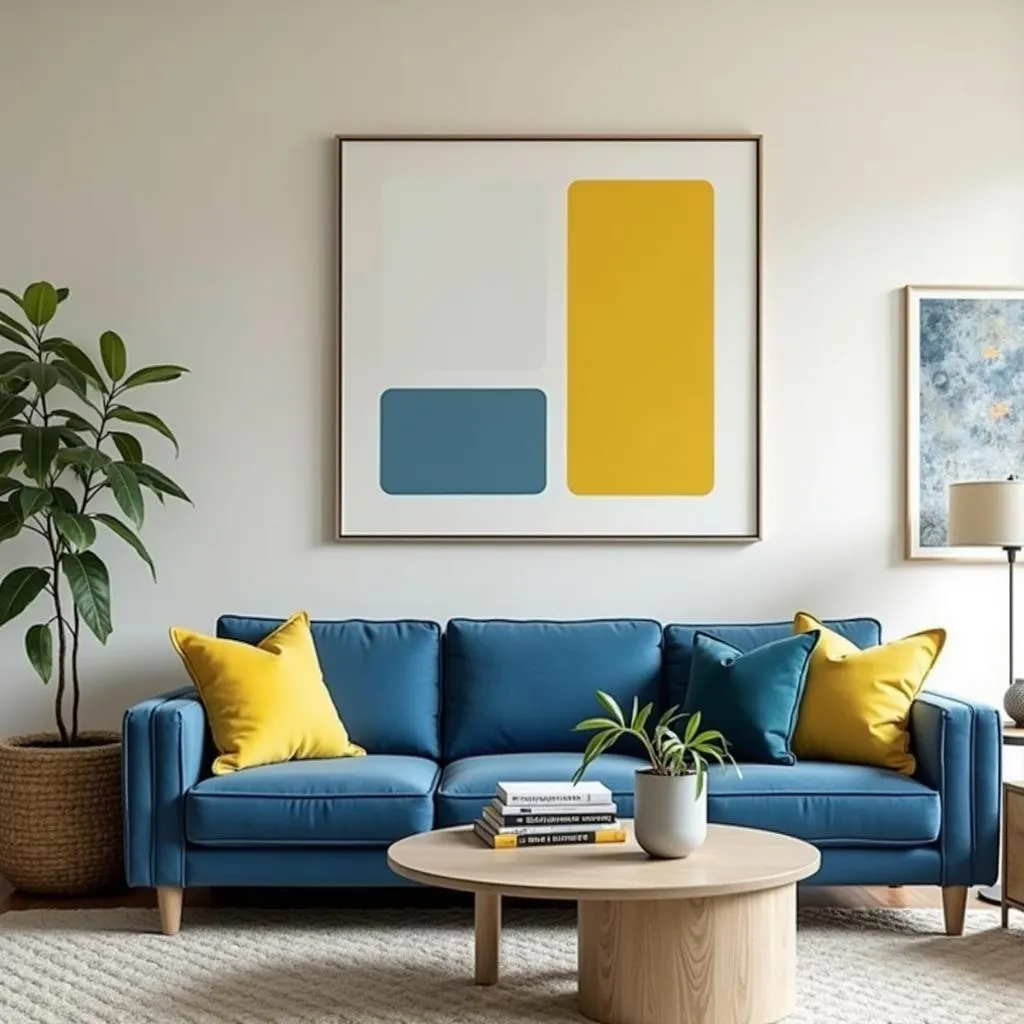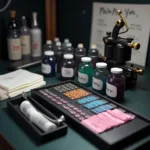Choosing the right paint color can be a daunting task. With endless possibilities, it’s easy to feel overwhelmed. This comprehensive guide will equip you with the knowledge and confidence to match paint colors on your walls like a pro.
 Matching Paint Color Samples
Matching Paint Color Samples
Understanding the Basics of Color Theory
Before delving into matching techniques, let’s establish a basic understanding of color theory. The color wheel, a visual representation of colors arranged according to their chromatic relationships, serves as our foundation.
Primary, Secondary, and Tertiary Colors
- Primary colors: Red, yellow, and blue form the basis of all other colors.
- Secondary colors: Mixing any two primary colors results in secondary colors like green, orange, and violet.
- Tertiary colors: Combining a primary color with an adjacent secondary color creates tertiary colors, such as red-violet or blue-green.
Warm vs. Cool Colors
Colors evoke different emotions and impact the ambiance of a room.
- Warm colors: Reds, oranges, and yellows, bring energy and vibrancy, making spaces feel cozier and more inviting.
- Cool colors: Blues, greens, and purples, promote calmness and tranquility, creating a sense of spaciousness.
 Warm and Cool Color Palette
Warm and Cool Color Palette
Factors to Consider When Matching Paint Colors
Matching paint colors goes beyond personal preference. Consider these factors for optimal results:
- Room Size and Lighting: Light influences color perception. Small rooms benefit from lighter shades to create an illusion of spaciousness. Conversely, larger rooms can handle bolder hues.
- Natural Light: North-facing rooms receive cooler light, while south-facing rooms enjoy warmer sunlight. Adjust your color choices accordingly.
- Existing Furniture and Decor: Harmonize your wall color with your existing furniture and decor. Consider the undertones of fabrics, wood finishes, and artwork.
- Mood and Atmosphere: Decide on the desired mood. For a relaxing bedroom, opt for soothing blues or greens. A vibrant yellow can energize a kitchen.
Effective Techniques for Matching Paint Colors
1. Start with Inspiration
Gather inspiration from magazines, websites, or even nature. Identify color combinations that resonate with you.
2. Utilize Color Swatches
Paint swatches are invaluable tools. Obtain several swatches in shades that appeal to you and hold them against your wall in different lighting conditions.
3. Test Paint Samples
Never skip this crucial step. Purchase small samples of your top choices and paint a section of your wall. Observe how the colors look at various times of day and under artificial lighting.
4. The 60-30-10 Rule
This classic design principle suggests dividing your color scheme into percentages:
- 60% Dominant Color: Walls often serve as the dominant color, setting the overall tone.
- 30% Secondary Color: Furniture, rugs, or curtains can introduce a secondary color to complement the dominant hue.
- 10% Accent Color: Add pops of accent color through accessories, artwork, or throw pillows.
 Living Room with 60-30-10 Color Scheme
Living Room with 60-30-10 Color Scheme
Advanced Tips for Color Matching
- Consider Undertones: Every color has an undertone, a subtle hue that influences its overall appearance. Understanding undertones is crucial for creating harmonious color combinations.
- Embrace Contrast: Don’t be afraid to introduce contrast. A darker accent wall can add depth and visual interest.
- Pay Attention to Sheen: Paint sheen affects how color is perceived. Matte finishes are ideal for hiding imperfections, while high-gloss sheens reflect more light.
- Seek Professional Advice: When in doubt, consult with a professional color consultant. Their expertise can save you time, money, and potential color mishaps.
Conclusion
Matching paint colors on your walls doesn’t have to be an overwhelming experience. By understanding basic color theory, considering key factors, and utilizing effective techniques, you can confidently create a harmonious and visually appealing living space. Remember, your home should be a reflection of your unique style and personality.
FAQs
Q1: What is the best way to match paint colors for an open floor plan?
A: In an open floor plan, maintain a cohesive color scheme throughout the space. Choose a dominant color for the main living areas and use variations of that color or complementary shades in adjoining rooms.
Q2: Can I use warm and cool colors in the same room?
A: Absolutely! Warm and cool colors can complement each other beautifully. For instance, you could pair a warm gray wall color with blue accents for a balanced and inviting look.
Q3: What is the easiest way to cover up a bold paint color?
A: A high-quality primer is essential when covering a bold color. Choose a primer specifically designed for covering dark colors and apply two coats for optimal coverage.
Q4: How can I test paint colors without painting my walls directly?
A: Paint large poster boards with your sample colors and move them around the room to observe the colors in different lighting conditions.
Q5: What should I do if I don’t like my paint color after it’s dry?
A: Don’t panic! If you’re unhappy with the final result, consult with a professional painter for advice. They can recommend solutions such as repainting with a different shade or adding decorative elements to balance the color.
Need further assistance? Contact us at 0373298888 or [email protected]. You can also visit our showroom at 86 Cầu Giấy, Hà Nội. Our dedicated team is available 24/7 to provide expert guidance and support for all your color matching needs.
